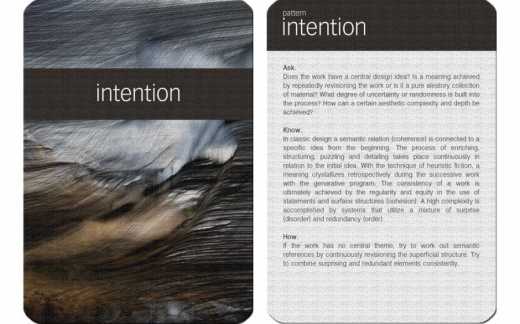Ask.
Does the work have a central design idea? Is a meaning achieved by repeatedly revisioning the work or is it a pure aleatory collection of material? What degree of uncertainty or randomness is built into the process? How can a certain aesthetic complexity and depth be achieved?
Know.
In classic design a semantic relation (coherence) is connected to a specific idea from the beginning. The process of enriching, structuring, puzzling and detailing takes place continuously in relation to the initial idea. With the technique of heuristic fiction, a meaning crystallizes retrospectively during the successive work with the generative program. The consistency of a work is ultimately achieved by the regularity and equity in the use of statements and surface structures (cohesion). A high complexity is accomplished by systems that utilize a mixture of surprise (disorder) and redundancy (order).
How.
If the work has no central theme, try to work out semantic references by continuously revisioning the superficial structure. Try to combine surprising and redundant elements consistently.



